
|
The VA-1 Angle Finder |

|
My other articles related to the |
|
This article was written by Rafael Millán from Spain. Rafael uses the E-500 for most of his daily shooting, and, interestingly, he belongs to a new generation of photographers: those who grew up in the digital domain, without previous exposure to film photography. As always in these pages, I've annotaded Rafael's article with my comments, which are always clearly marked as such. | |
|
After several years of shooting with compact digital cameras, and with no previous experience in film photography, beyond the occasional snapshot, I was totally used to framing with the LCD screen. Switching to a DSLR seemed quite a change, as these cameras do not offer live LCD preview, and you are forced to use the viewfinder. Getting used to the viewfinder was much easier than expected. In less than a week of using the new camera, I didn't miss the monitor at all when framing. Except, of course, those cases in which using the viewfinder is difficult or not possible: shooting from a table, macro or otherwise, floor or near-floor shooting, and a few other situations. Those situations don't arise very often in my case, but when they do, an alternative to eye-level framing is a life-saver. Finding one is not so difficult, as there is just one, at least from Olympus, as of this writing: the VA-1 Varimagni Angle Finder. I couldn't find a VA-1 review anywhere, but with no alternative I didn't hesitate long. I found no dealer in Spain stocking (or even listing) it, but I found an online seller asking €153 plus tax (more than US$200 total). It seemed expensive, and I couldn't test it before buying, but... The VA-1 arrived six weeks after I ordered it. Andrzej: Life is so much less expensive in the States: B&H currently offers the VA-1 at $175. In the box |
|
The VA-1 comes with a nylon pouch, an information sheet, and two adapters: the VA-A1 (for the E-1), and the VA-A2 (for the E-300, E-500, and E-330). The adapter attaches to the short arm of the VA-1 and then to the corresponding camera. |
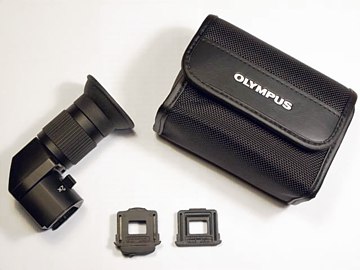
|
|
Construction The long arm has a wide diopter adjustment ring, which is intended for frequent use, as one has to turn it clockwise all the way in order for the VA-1 to fit in its case, so it has to be adjusted every time is taken out of storage. Also, it is necessary to readjust the diopter control when switching magnifications. This was originally a disappointment, until I got used to it. Fortunately, the operation is smooth and precise. The adjustment goes from -5 to +3 diopters, according to the Olympus specifications. The eyecup has a diameter of 47 mm and is about 10 mm deep. I find it of adequate dimensions, and comfortable to use. The eyepiece lens itself has a diameter of 11 mm. The magnification switch is located on the top face of the short arm, and has two positions: 1× and 2×. According to specs, at 1× there are 6 elements in 4 groups, and at 2× there are 7 elements in 5 groups. No diagram of the optical system is provided, however. Andrzej: Obviously, switching magnifications moves an optical element in or out of the optical path. This explains why the operation is not afocal, i.e., requires re-adjustment of diopter control. While this could, in theory at least, happen automatically, it would require an additional mechanical coupling, increasing size, complexity, and price of the device. | |
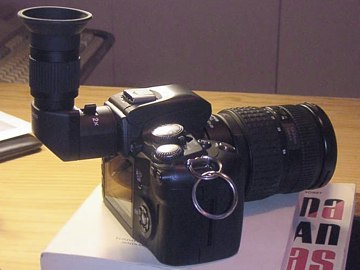
|
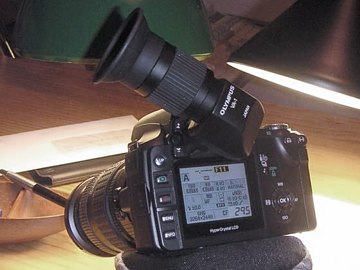
|
|
The short arm remains fixed when the long arm rotates — always in the plane parallel to the camera back. The rotation has soft indents every 90 degrees, but intermediate angles can be used. The fixed rotation plane, however, keeps the line of view always perpendicular to the lens axis. I find this the biggest limitation of the VA-1. It would be much more useful if the eyepiece could separate from the fixed rotation plane, even if by just 30 or 45 degrees. I suppose, however, that it would make the device much more complex and expensive. Still, if it has to be a fixed-angle design, I would have choosen the angle between the arms to be 135, instead of 90, degrees; i.e., the eyepiece facing 45 degrees back. Andrzej: Bending the optical path by a variable angle would be, indeed, a design challenge, if possible at all. I haven't seen this implemented in any angular finder yet. Viewing At 1× magnification, the viewfinder image appears, regarding size and brightness, about the same as with no adapter. This is my subjective perception, as I don't have any easy means available for measuring these parameters objectively. The image is not inverted. At 2× magnification, I find the viewed image large and clear, and much more suitable for manual focusing than the normal viewfinder image. Indeed, I was able to shoot easily and consistently well-focused images in my first trial session, with the Zuiko 14-54 mm lens and the EX-25 extension tube. |
|
The information sheet warns: "When used with the E-300, the left side of the finder image will be cut off at 2× magnification." I haven't verified this with an E-300, but when used with the E-500, there is just a tad of cut-off at both top corners (the in-finder information display is, however, almost entirely cut off). The effect varies slightly as the VA-1 rotates. This is roughly illustrated in the included diagram. |
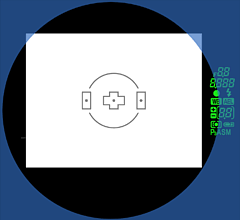
|
|
Andrzej: The finder image is 10% smaller in the E-500 than in the E-300 (or E-1). Imagine the white rectangle in Rafael's drawing being 10% larger, and this would give you some idea what corner cut-off to expect in those cameras. I am not sure why Olympus said "left side" in their warning: does that mean that the finder image in the E-300 is shifted to the left (as if to make some room for the vertical information display)? Obviously, at 1× magnification, the image circle does not infringe on the finder image. In use I find that the VA-1 makes a very positive difference in macro shooting, both by moving the eye position, and by making manual focusing significantly easier. Andrzej: The most important plus is the almost-full field coverage. I have seen a number of angle finders and/or magnifiers limited to just a central circle of the frame (about 50% of the width). Let us not take this for granted... In theory, one would use the adapter in the upright position for waist-level or low-angle shooting, while facing downwards it could allow for shooting overhead. In the latter case, however, bending your neck backward to look straight up will be not easy or possible for everybody, especially for more than a minute or so at a time. In conclusion, I can recommend the VA-1 for macro work. For other applications, even if it can be useful to a certain extent, it is far from being a complete solution. Andrzej: This seems to be a general limitation of angle finders, not just of this particular model. I have used models by Nikon (DR-4), Minolta (VN), and Exakta in the past, and all were constrained in this aspect. I agree that a 45° eyepiece offset might, arguably at least, be a better choice. For some reasons, last time I saw an angle finder of that kind was almost twenty years ago! (Some medium-format cameras, though, have 45° prism finders.) |
|
There is, however, an alternative to the VA-1: a small Polish photography studio makes the IR-QA Angle Finder, offering a fixed magnification and, hallelujah!, 45° viewing angle. I bought one in May of 2006, and I like it (be warned, however, that I haven't used the VA-1). You may want to have a look at the full review. (Picture by permission of the manufacturer.) |
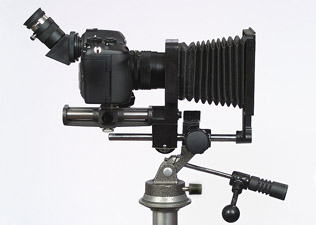
|

|
My other articles related to the |
|
Olympus® is a registered trademark of Olympus Corporation.
This page is not sponsored or endorsed by Olympus (or anyone else) and presents solely the views of the authors. |
| Home: wrotniak.net | Search this site | Change font size |
| Posted 2006/02/26; last updated 2006/07/04 | Copyright © 2006 by Rafael Millán and J. Andrzej Wrotniak |